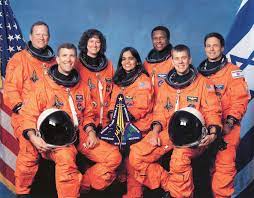On January 16, 2003, the Space Shuttle Columbia embarked on a fateful mission, designated STS-107, which would tragically end in disaster just a few days later. The mission aimed to conduct a variety of scientific experiments and research, with a focus on studying the effects of microgravity on various materials and organisms. Little did the crew know that their journey into space would become a somber chapter in the history of space exploration. The crew of STS-107 was a diverse and accomplished group of individuals. Commander Rick Husband led the mission, joined by Pilot William McCool, Payload Commander Michael Anderson, Mission Specialists David Brown, Kalpana Chawla, and Laurel Clark, as well as Israeli payload specialist Ilan Ramon. Each member brought unique expertise and dedication to the scientific endeavors planned for the mission. As Columbia soared into space, it marked the 113th flight in the Space Shuttle program and the 28th flight for the orbiter Columbia. The crew conducted a series of experiments encompassing fields such as fluid physics, material science, and life sciences. Their work was integral to expanding our understanding of how various systems behaved in the microgravity environment of space. However, on February 1, 2003, tragedy struck during the shuttle's reentry into Earth's atmosphere. The shuttle disintegrated over Texas, leading to the loss of all seven crew members. The catastrophic event unfolded as a result of damage sustained to the shuttle's thermal protection system during its launch on January 16. A piece of foam insulation had struck the left wing, compromising its integrity. Despite concerns raised by engineers during the mission, the severity of the damage was underestimated, ultimately leading to the shuttle's destruction during reentry. The Columbia disaster had a profound impact on NASA and the global space community. It prompted a thorough investigation into the circumstances surrounding the tragedy, revealing not only technical failures but also systemic issues within NASA's organizational culture. The subsequent findings led to a reevaluation of safety protocols, decision-making processes, and communication within the agency. The loss of the STS-107 crew served as a stark reminder of the inherent risks and challenges associated with space exploration. It sparked a renewed commitment to safety and a dedication to learning from past mistakes. In the aftermath of the Columbia disaster, NASA implemented numerous changes to prevent similar incidents in the future, including improved inspection procedures for the shuttle's thermal protection system and enhanced communication between mission control and on-orbit crews. January 16, 2003, will forever be etched in the history of space exploration as the day the STS-107 mission began its journey into the unknown, ultimately ending in a heartbreaking tragedy. The crew's sacrifice serves as a poignant reminder of the courage and dedication required to push the boundaries of human knowledge, as well as the ongoing commitment to ensuring the safety of those who venture into the vastness of space in the pursuit of scientific discovery.
16 January 2003 Space Shuttle Columbia
